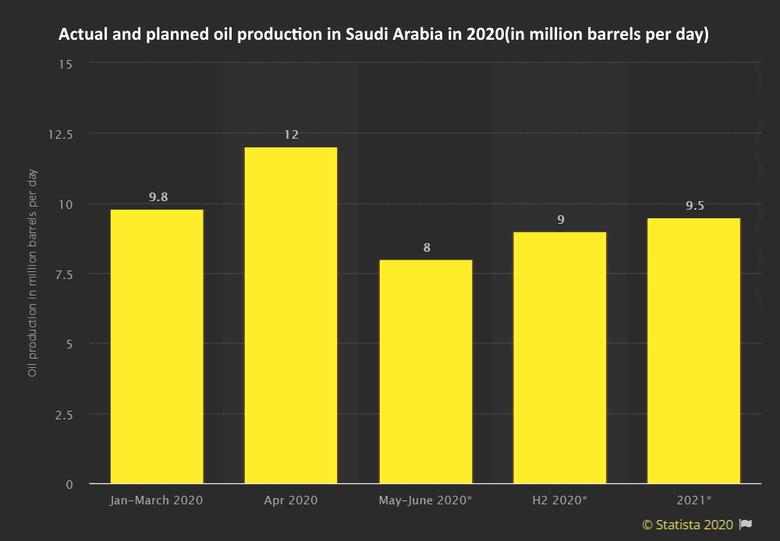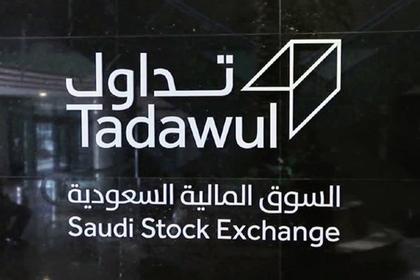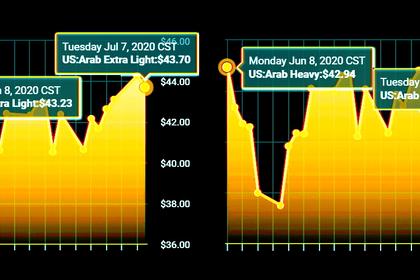
SAUDI ARAMCO INVESTMENT $13.6 BLN

PLATTS - 09 Aug 2020 - Saudi Aramco, the world's biggest oil company, is reducing its capital expenditure spend for 2020 due to the market conditions brought about by the COVID-19 pandemic, yet the company expects global oil demand to recover to 95 million b/d by the end of the year, Aramco President and CEO Amin H Nasser said in the company's second-quarter results call.
Capital expenditure was $6.2 billion in Q2 and $13.6 billion for the first half of 2020. Aramco said it is continuing a capex optimization and efficiency program, which will see it at the lower end of the $25 billion to $30 billion range for 2020.
However, the company is "optimistic" on the market largely recovering to pre-coronavirus levels by the end of the year, Nasser said.
Additionally, Aramco is continuing to expand its gas business, to meet future global and domestic energy demand, it said. In line with this strategy, the Fadhili Gas Plant reached its full production capacity of 2.5 Bcf/day during the second quarter.
The oil giant saw its profits crash by 73% in Q2 to Riyal 24.62 billion ($6.6 billion), compared with Riyal 92.59 billion ($24.7 billion) for the same quarter of 2019, as it continues to battle the ongoing market crash amid the slump in demand due to the COVID-19 pandemic.
The results reflect the impact of lower crude oil prices, due to the ongoing global market crash, which is mainly caused by a huge drop in demand triggered by the pandemic, the oil giant said in a statement.
Moreover, its revenues for Q2 were 57% down year on year, and 45% lower than in Q1, when the full force of the market slump had not been fully realized. During the quarter, Aramco's hydrocarbons production averaged 12.7 million b/d of oil equivalent. By contrast, production of crude oil and condensate averaged 13.2 million boe/d last year.
'Headwinds'
"Strong headwinds from reduced demand and lower oil prices are reflected in our second-quarter results. Yet we delivered solid earnings because of our low production costs, unique scale, agile workforce, and unrivaled financial and operational strength," Nasser said in the statement. "This helped us deliver on our plan to maintain a second quarter dividend of $18.75 billion to be paid in the third quarter."
Aramco -- which listed a small percentage of its shares Dec. 11 on Saudi Arabia's Tadawul domestic stock exchange -- scored the world's biggest initial public offering of $29.4 billion, beating the previous record held by Chinese e-commerce giant Alibaba, which raised $25 billion in 2014.
Following the results announcement Aug. 9, Saudi Aramco shares were trading at Riyal 32.90 on Tadawul. By contrast, its IPO price in December was Riyal 32 ($8.53), giving the company a valuation of $1.7 trillion in December.
As part of its pitch to investors during the share sale, Aramco pledged to issue a $75 billion dividend annually for five years. In keeping with this promise, the company declared a dividend of $18.75 billion for the first quarter.
However, free cash flow was $6.1 billion in the second quarter and $21.1 billion for the first half of 2020, respectively, compared with $20.6 billion and $38.0 billion for the same periods in 2019.
On the call, Nasser said that it is still the company's intention to pay the dividend, however this will be subject to board approval. He pointed to the fact that Aramco has an undrawn revolving credit facility, which could be used to plug the shortfall.
SABIC
Aramco on June 17 said it completed the share acquisition of a 70% stake in Saudi Basic Industries Corp (SABIC) from the Public Investment Fund, Saudi Arabia's sovereign wealth fund, for a total purchase price of Riyal 259.125 billion.
SABIC said on Aug. 6 it saw average petrochemical prices in the second quarter plunge by 27% year-on-year as it posted a third consecutive quarterly loss. Average petrochemical prices were 27% lower in the second quarter from the year-earlier period and down 18% from the first quarter.
The acquisition of the SABIC stake is part of Aramco's strategy to extend its downstream footprint by growing its integrated refining and petrochemicals capacity to add value across the hydrocarbon chain.
In 2019 Aramco and SABIC recorded petrochemicals production volume of nearly 90 million mt combined. Petrochemicals has been identified as Aramco's highest area of growth for the next two decades, Nasser said.
-----
Earlier:










